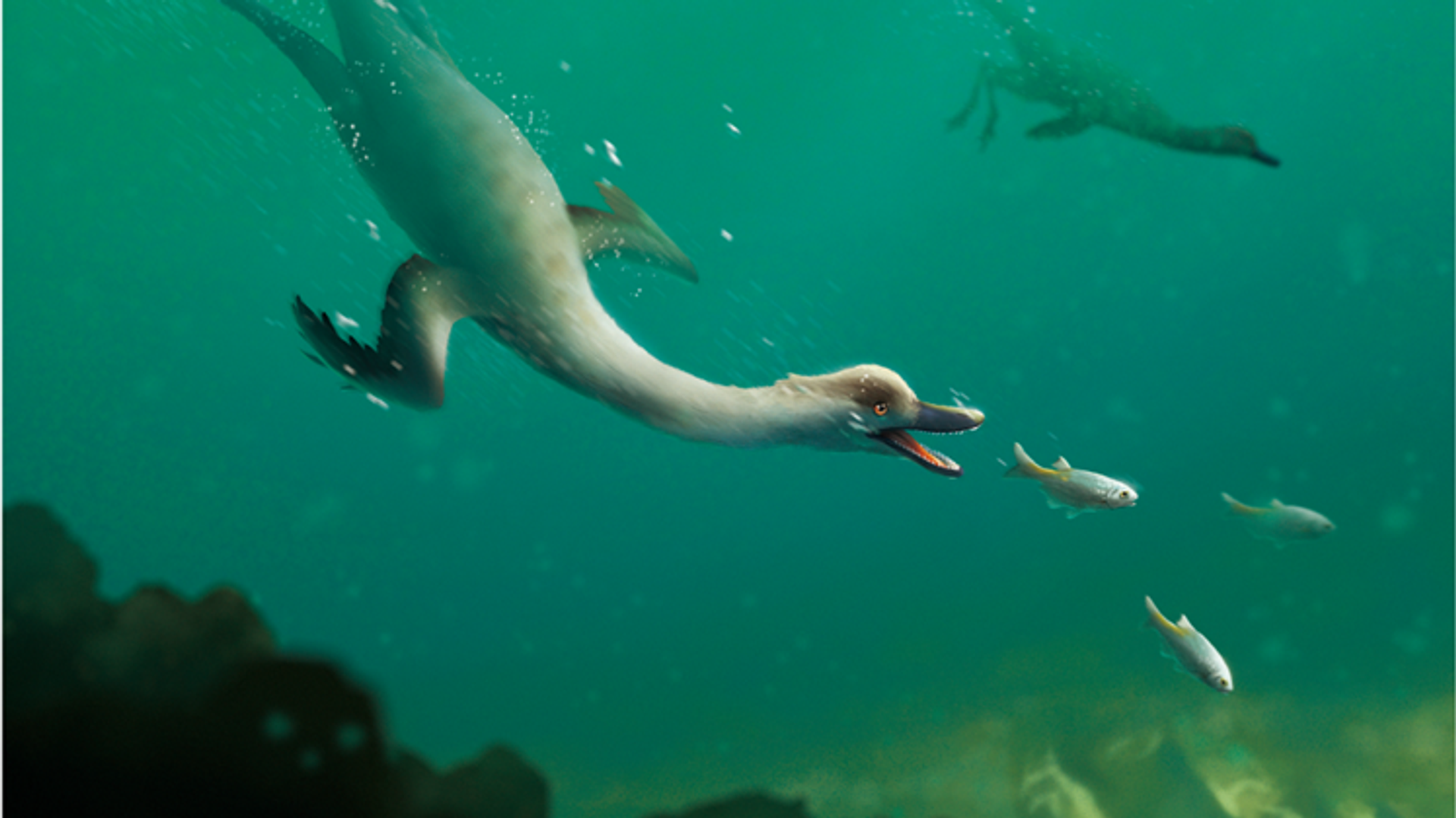https://sputnikglobe.com/20221203/scientists-find-first-non-avian-swimming-dinosaur-in-mongolia-1105007727.html
Scientists Find First Non-Avian Swimming Dinosaur in Mongolia
Scientists Find First Non-Avian Swimming Dinosaur in Mongolia
Sputnik International
The Baruungoyot (West Goyot) Formation at Hermiin Tsav in the southern Gobi Desert is famous for preserving the remains of multiple ancient species, including... 03.12.2022, Sputnik International
2022-12-03T13:49+0000
2022-12-03T13:49+0000
2022-12-03T13:49+0000
science & tech
discovery
dinosaurs
mongolia
https://cdn1.img.sputnikglobe.com/img/07e6/0c/03/1105008179_0:535:747:955_1920x0_80_0_0_9f0772f5228c6c9a399f935787305fb1.png
An international team of scientists has examined the remains of a dinosaur found in the southern Gobi Desert, at a place called Hermiin Tsav, and identified a number of unique features indicating a semi-aquatic lifestyle and active hunting for fish. This is the first known non-avian dinosaur with such a body organization. Especially unusual is the fact that this species was not a marine one.Scientists named the new species Natovenator polydontus, which means ”many-toothed swimming hunter.” There are 13 teeth in its premaxillary bone (humans only have four in what's left from the place).The species was small - half a meter with its tail, and barely more than 40 centimeters in height. Despite its "avian" size, it was not related to birds: those do not have teeth.Unusual in the anatomy of Natovenator polydontus is the orientation of the ribs: they are "converging to the tail," something found today in actively swimming birds - both non-flying (penguins) and flying (auks). This is useful in terms of hydrodynamics, as it reduces resistance in water, but does not help flying or purely terrestrial species.Perhaps the remoteness from the sea explains other anatomical features of the natovenator. In particular, its limbs are noticeably longer than those of penguins. This is probably a consequence of adaptation to an environment with many highly mobile land predators around. Most likely the natovenator could easily evade them by going into the water, where its hydrodynamically adapted body would give it a great speed advantage.
mongolia
Sputnik International
feedback@sputniknews.com
+74956456601
MIA „Rossiya Segodnya“
2022
News
en_EN
Sputnik International
feedback@sputniknews.com
+74956456601
MIA „Rossiya Segodnya“
Sputnik International
feedback@sputniknews.com
+74956456601
MIA „Rossiya Segodnya“
new dinosaur found in mongolia, firts non-avian swimming dinosaur found in mongolia, new dinosaur found in mongolia, what non-avian dinosaur was found in mongolia
new dinosaur found in mongolia, firts non-avian swimming dinosaur found in mongolia, new dinosaur found in mongolia, what non-avian dinosaur was found in mongolia
Scientists Find First Non-Avian Swimming Dinosaur in Mongolia
The Baruungoyot (West Goyot) Formation at Hermiin Tsav in the southern Gobi Desert is famous for preserving the remains of multiple ancient species, including dinosaurs.
An international team of scientists has examined the remains of a dinosaur found in the southern Gobi Desert, at a place called Hermiin Tsav, and identified a number of unique features indicating a semi-aquatic lifestyle and active hunting for fish. This is the first known non-avian dinosaur with such a body organization. Especially unusual is the fact that this species was not a marine one.
Scientists named the new species Natovenator polydontus, which means ”many-toothed swimming hunter.” There are 13 teeth in its premaxillary bone (humans only have four in what's left from the place).
The species was small - half a meter with its tail, and barely more than 40 centimeters in height. Despite its "avian" size, it was not related to birds: those do not have teeth.
Unusual in the anatomy of Natovenator polydontus is the orientation of the ribs: they are "converging to the tail," something found today in actively swimming birds - both non-flying (penguins) and flying (auks). This is useful in terms of hydrodynamics, as it reduces resistance in water, but does not help flying or purely terrestrial species.
Perhaps the remoteness from the sea explains other anatomical features of the natovenator. In particular, its limbs are noticeably longer than those of penguins. This is probably a consequence of adaptation to an environment with many highly mobile land predators around. Most likely the natovenator could easily evade them by going into the water, where its hydrodynamically adapted body would give it a great speed advantage.

